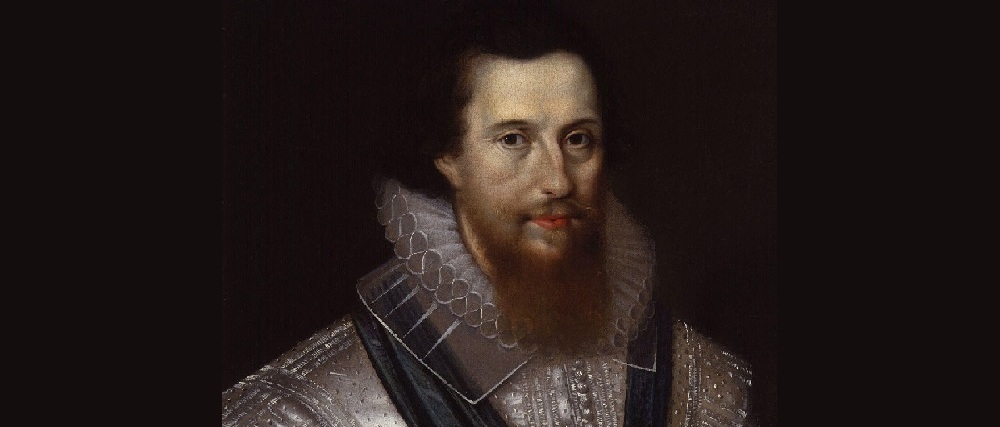Robert Devereux, 2nd Earl of Essex
Posted on 5th February 2021
Robert Devereux was born on 10 November, around 1565 at Netherwood, near Bromyard in Herefordshire, the son of Walter Devereux, 1st Earl of Essex and Lettice Knollys.
His father died when he was still a child and he became Robert Devereux, 2nd Earl of Essex in 1576, then becoming the ward of Lord Burghley who oversaw his education starting at Trinity College, Cambridge in 1577 and graduating in 1581.
Devereux was a charming man, full of wit and it did not take him long after entering the royal court in 1584, to become a favourite of Queen Elizabeth I.
He fought against the Netherlands in 1586 and raised through the ranks, becoming Master of the Horse in 1587, a position he took from his step-father Robert Dudley, then Earl of Leicester.
Devereux and Elizabeth had a volatile relationship, and he was often disrespectful to her and even disobeyed her as when following the Spanish Armada of 1586, he joined the English Armada in 1587, even though she had ordered him not to go.
In 1590 Devereux secretly married Frances Walsingham, widow of Sir Philip Sidney. Queen Elizabeth I was furious when she finally discovered the marriage but again she forgave him and continued to bestow titles and honours on him.
In 1591 Elizabeth gave Devereux command of a force to assist King Henry IV of France against the Catholics and in 1593 he became a member of the Privy Council.
In 1596 Devereux was one of the commanders of a successful expedition to capture Cadiz from the Spanish, however even with this success he still went on to disobey the Queen’s orders and pursued the Spanish fleet off the Azores, but he failed to intercept them.
Elizabeth was aware of the growing threat of rebellion in Ireland and Devereux at his own request was sent as Lord Lieutenant of Ireland in 1599 with a force of 16,000 men to crush the rebellion of Hugh O’Neill, Earl of Tyrone.
Instead of meeting O’Neill in Ulster as he had stated, Devereux seemed to go out of his way to avoid O’Neill, instead fighting some minor skirmishes in Southern Ireland. He spent his time dispensing knighthoods to his soldiers, hoping for their loyalty when he returned to court.
Devereux’s time in Ireland was not a success, and without the authority of Queen Elizabeth, he agreed a truce with O’Neill. He also decided to return to England and set sail from Ireland on 24 September 1599, again this was against the orders of Elizabeth.
This time Devereux would not walk away unscathed from his actions and Elizabeth placed him under house arrest. The Privy Council convened a special meeting where they decided that his truce with O’Neill, without royal authority was unpardonable and his return to England directly against the orders of the Queen was a desertion of duty. This resulted in Devereux being deprived of his high office, leaving him almost penniless and confined to his house.
Although Devereux was later released from house arrest by the Queen, she banned him from returning to court. He was now in financial ruin and his anger and resentment at his treatment would lead him to rebellion.
Devereux spent time gathering followers to his cause and on 8 February 1601 they marched on the city of London hoping to incite a revolt. This unsuccessful attempt at rebellion led to Devereux being named a traitor, and following his surrender he was convicted and condemned to death.
Robert Devereux was executed for treason on 25 February 1601 at Tower Green in the Tower of London. He had spent many years as a favourite of Queen Elizabeth I, but his own disobedience and belief in his right to wealth led to his downfall.
Tagged as: Junior Tudors
Share this post:





